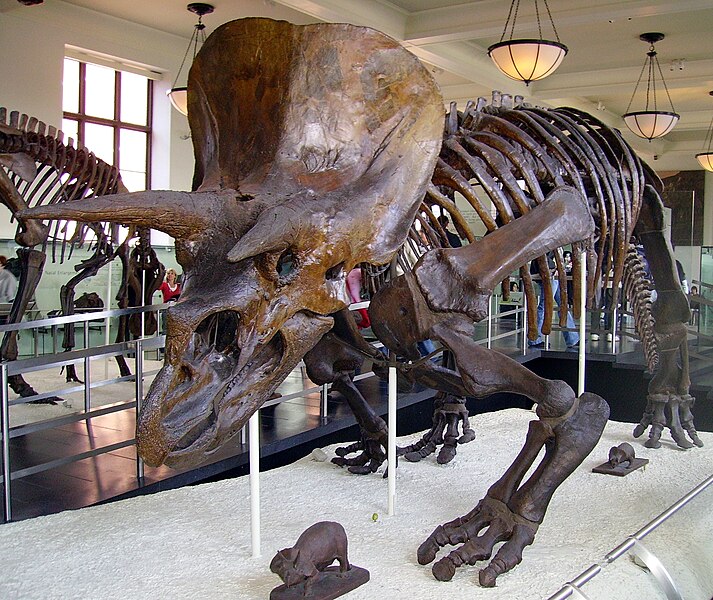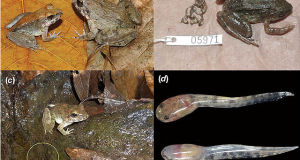Horned Lizards (Phrynosoma spp., please see photo) and odd Australia’s Thorny Devil (Moloch horridus) have always reminded me of dinosaurs – I think it was their horn-bearing skulls. I recall sketching my pet Horned Lizards and taking the (somewhat primitive!) drawings to the American Museum of Natural History for comparisons with the Triceratops skeletons displayed there. This month (September, 2010), fans of such reptiles and dinosaurs were pleased to learn of the discovery of 2 new dinosaur species, one of which bore 15 horns upon its head – more than any other animal, past or present.
North America’s Lost Continent
The new species were uncovered in the Grand Staircase-Escalante National Monument, southern Utah, USA. The area lies in what was once the “lost continent” of Laramidia, formed when an ancient sea separated the eastern and western portions of North America for millions of years. The enforced isolation gave rise to innumerable bizarre insects, fishes, amphibians, dinosaurs and other creatures, many of which, it appears, have yet to be discovered.
Two New Triceratops Relatives
The strangest Laramidia resident to come to light so far is the recently described Kosmoceratops richardsoni, or “Ornate Horned Face”. Related to the well known Triceratops (please see photo of skeleton), this beast sported 15 horns – one over the nose, each eye and at the end of each cheek bone, as well as 10 along the margin of the frill atop its head. It is described by researchers at the Utah Museum of Natural History and University of Utah as “One of the most amazing animals known…”.
The second species unearthed, Utahceratops gettyi, was not so ornately adorned, but bore a 7 foot long skull. It put researchers in mind of “…a giant rhino with a ridiculously super-sized head”.
Why so Many Horns?
 The 2 bizarre creatures likely inhabited wet, subtropical swamps, and were herbivorous. Their horns are believed to have assisted in attracting mates, and may also have been used in dominance battles with others of their kind. Their shape and positions makes it unlikely that they were of much use in fending off predators.
The 2 bizarre creatures likely inhabited wet, subtropical swamps, and were herbivorous. Their horns are believed to have assisted in attracting mates, and may also have been used in dominance battles with others of their kind. Their shape and positions makes it unlikely that they were of much use in fending off predators.
Further Reading
You can read more about the continent of Laramidia and its odd creatures on the website of the Utah Museum of Natural History. Both skulls are on display at the museum.
Triceratops image referenced from wikipedia and originally posted by Michael Gray
 That Reptile Blog – Reptile, Amphibian and Exotic Pet Care and Information
That Reptile Blog – Reptile, Amphibian and Exotic Pet Care and Information


